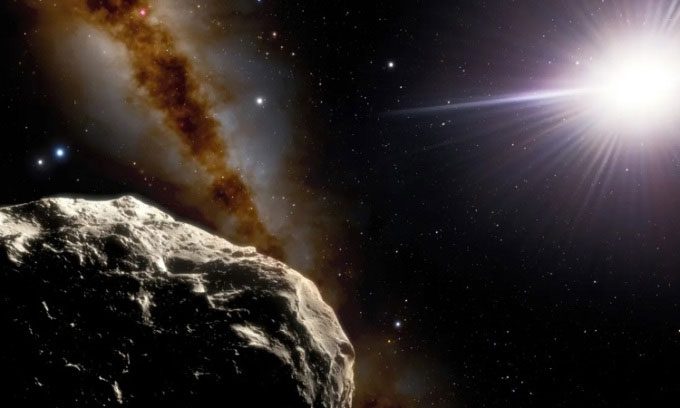A large asteroid, roughly the size of a car, was discovered on the same day that it flew past Earth at a closer distance than many large geostationary satellites.

Simulation of an asteroid traveling through space. (Photo: NOIRLab).
The Catalina Sky Survey observatory in Arizona first detected the asteroid on December 17, when it was only 21,000 km away from Earth, much closer than the 35,786 km altitude of telecommunications satellites. If the asteroid named 2022 YO1 were to collide with Earth, it is likely to cause very little damage and burn up almost entirely in the atmosphere. However, it could create a fireball. In comparison, the meteor that exploded over Russia in 2013 shattered thousands of windows and had an estimated diameter of about 40 meters, roughly 10 times larger than 2022 YO1.
2022 YO1 ranks sixth among the closest near-Earth asteroids detected this year. This is a sign that astronomers are increasingly improving their observations to detect more objects in the near-Earth environment. The trajectory model of 2022 YO1 within the inner solar system indicates that it will pass by Earth again in 2024.
As astronomers continue to classify and monitor more asteroids and comets, there are relatively few observatories in the Southern Hemisphere. NASA hopes to address this issue through the NEO Surveyor mission, scheduled for launch in June 2028.
NASA estimates there are about 1.1 million asteroids in the solar system, most of which are located in the asteroid belt between Mars and Jupiter. Asteroids heading toward Earth’s orbit can be propelled by collisions in the belt or influenced by gravitational interactions with larger celestial bodies like Jupiter. Many asteroids are classified as near-Earth objects (NEOs) due to their proximity to the planet. Some NEOs are classified as potentially hazardous if they are within 7.4 million kilometers of Earth’s orbit and have a diameter greater than 140 meters.


















































